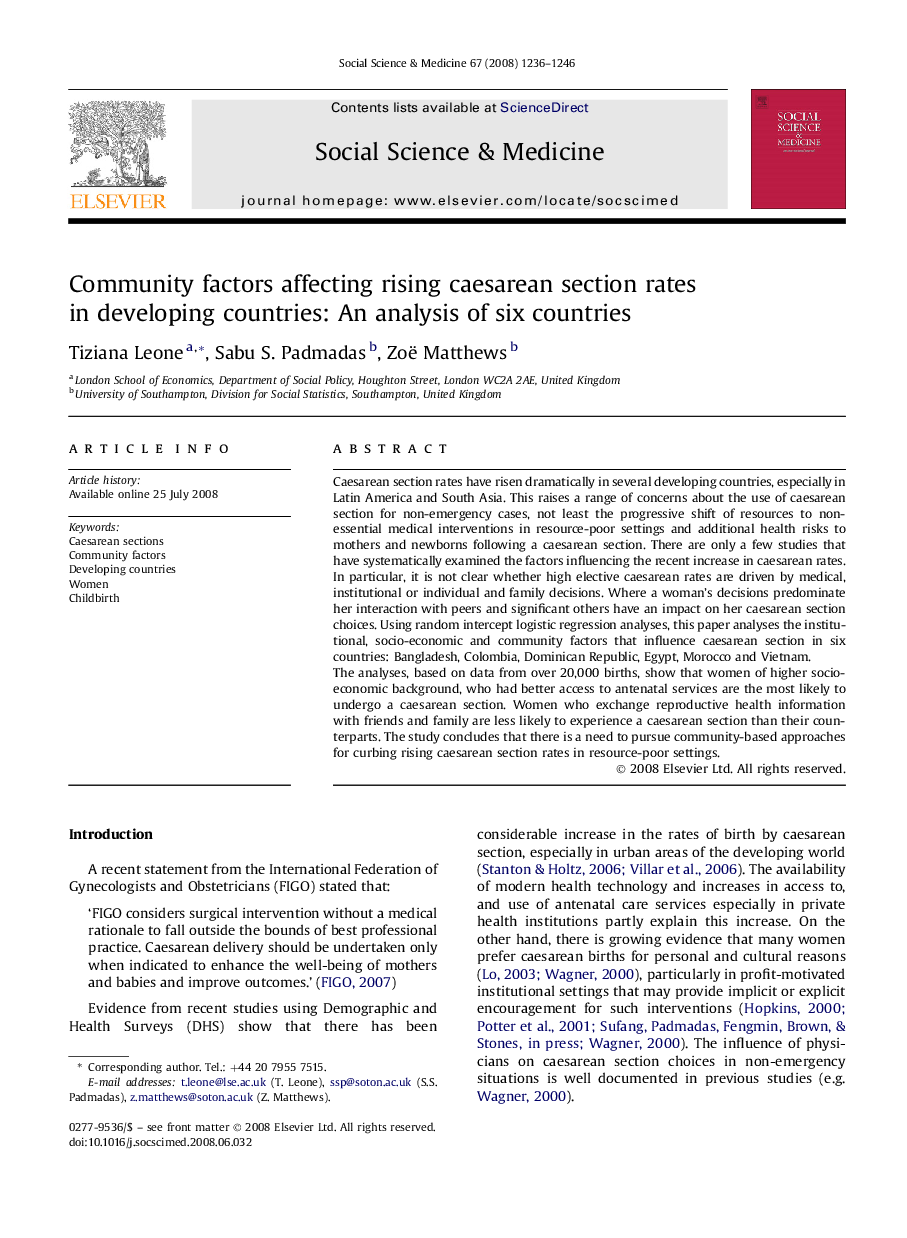| Article ID | Journal | Published Year | Pages | File Type |
|---|---|---|---|---|
| 953670 | Social Science & Medicine | 2008 | 11 Pages |
Caesarean section rates have risen dramatically in several developing countries, especially in Latin America and South Asia. This raises a range of concerns about the use of caesarean section for non-emergency cases, not least the progressive shift of resources to non-essential medical interventions in resource-poor settings and additional health risks to mothers and newborns following a caesarean section. There are only a few studies that have systematically examined the factors influencing the recent increase in caesarean rates. In particular, it is not clear whether high elective caesarean rates are driven by medical, institutional or individual and family decisions. Where a woman's decisions predominate her interaction with peers and significant others have an impact on her caesarean section choices. Using random intercept logistic regression analyses, this paper analyses the institutional, socio-economic and community factors that influence caesarean section in six countries: Bangladesh, Colombia, Dominican Republic, Egypt, Morocco and Vietnam.The analyses, based on data from over 20,000 births, show that women of higher socio-economic background, who had better access to antenatal services are the most likely to undergo a caesarean section. Women who exchange reproductive health information with friends and family are less likely to experience a caesarean section than their counterparts. The study concludes that there is a need to pursue community-based approaches for curbing rising caesarean section rates in resource-poor settings.
